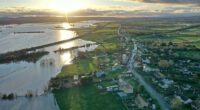No one knows how many of these elusive and mysterious creatures are left but time is thought to be running out as artificial barriers fragment their habitat
Wildlife photographer Yukihiro Fukuda first began diving in the cool waters of the Hino River in south-western Japan 15 years ago. But it was not until six years later that he was able to capture the extraordinary image of a male Japanese giant salamander guarding hundreds of eggs, which gained him a place in the finals of the Wildlife Photographer of the Year competition, staged by London’s Natural History Museum. The salamander was named Fukuda-kun in his honour.
It was the first time the nesting behaviour of these mysterious amphibians, which it is thought could live up to 100 years and whose biology has changed little over the last 23m years, had been caught on camera.




